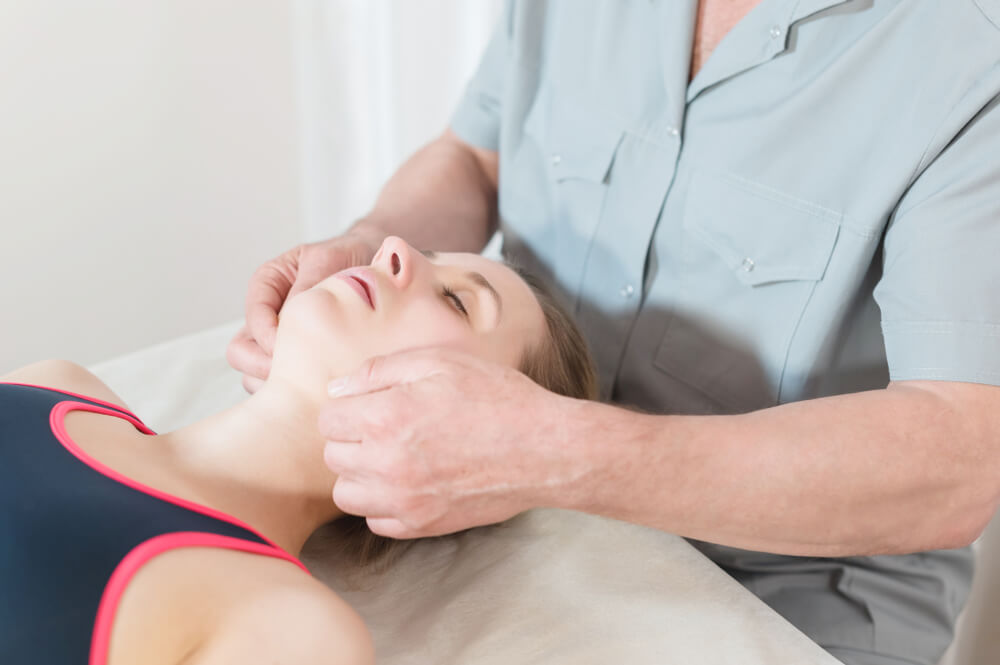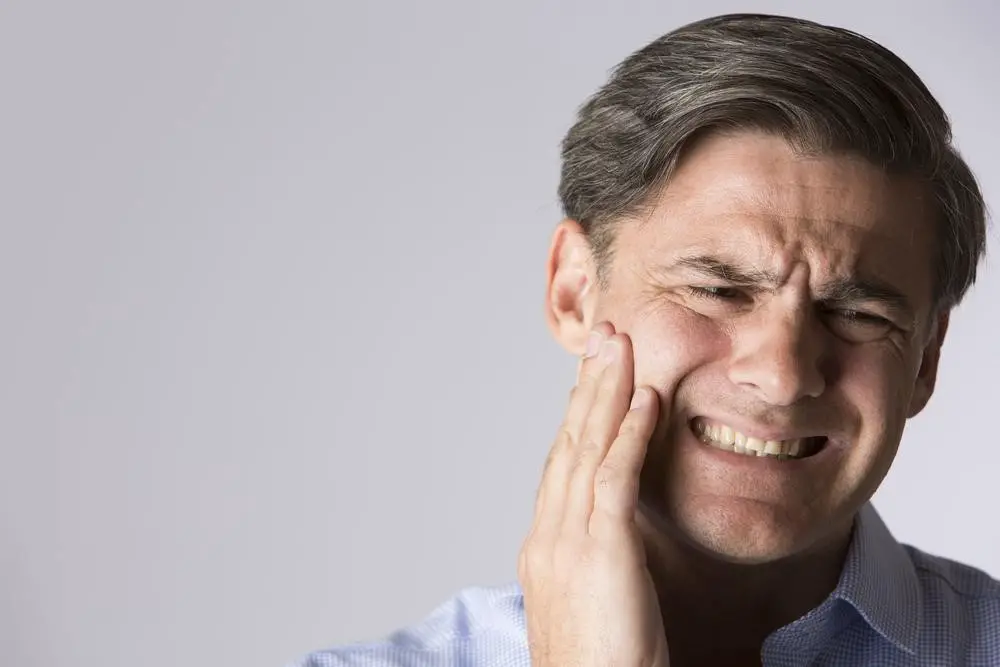Article reviewed and approved by Dr. Ibtissama Boukas, physician specializing in family medicine
The jaw performs important functions in communication and feeding. Talking, chewing, swallowing… these are actions that can only be carried out thanks to the jaw movements. Pain at this level can become both uncomfortable and debilitating. From one patient to another, the origin of these pains can vary. In this article, learn about the treatments offered for each cause.
Jaw pain: what is it exactly?
For better understand what jaw pain is, let us return above all to its functions and its constitution. These are the two bony parts of the mouth in which the teeth naturally attach. More specifically, it is made up of these two bones:
- themaxillary bone which forms the upper jaw;
- la mandible which constitutes the lower jaw.
The mandible is attached to the skull by a joint called "TMJ" or " temporomandibular joint ". It is thanks to this joint that the jaw manages to move. L'cause of jaw pain can also come from this joint.
What causes jaw pain?
Many causes can be at thecauses of jaw pain.
The stress
It is one of most common causes of jaw pain. It causes muscle contractions and sometimes causes bruxism.
Bruxism
It is an unconscious clenching of the teeth that can occur during the day or during sleep. It may or may not be associated with squeaking. If bruxism is not due to stress, it could just as well come from a problem of dental alignment.
A dental problem
Presence of a cavity, a fractured tooth, a dental dressing, a growth of a wisdom tooth, a cyst...
Osteoarthritis of the jaw
It designates a TMJ cartilage wear which can cause cracking, rubbing, and even painful swelling at times.
Damage to one or more nerves
It can be a dental or facial nerve, or cutaneous nerves. This damage can be infectious, viral or mechanical.
Cancer
It can affect the upper jaw, the lower jaw, the mandible bone or the oral cavity. Depending on the tissue from which the cancer develops, several types of cancer can form: osteosarcoma;
- fibrosarcoma;
- chondrosarcoma;
- sarcoma;
- and odontogenic carcinoma.
Jaw osteomyelitis
It is an infection that affects the temporomandibular joint. In addition to pain in this area, it can cause swelling of the face and fever.
Costen's syndrome
Algo-dysfunctional syndrome of the temporomandibular joint (or SADAM), also called costen's syndrome, is another cause. It reaches the ATM and causes pain accompanied by a clicking sound when opening the mouth and chewing.
What are the signs of jaw pain?
The jaw pain occur during chewing and swallowing. They can radiate to the ear, throat, and cervical. Difficulty opening the mouth is also noted.
These signs may be associated with headaches and swelling of:
- jaw ;
- of the face ;
- gums;
- lymph nodes in the neck.
When should you worry?
In case of delay or lack of support, various situations can become alarming such as:
- nocturnal bruxism, because during sleep it is completely uncontrollable;
- local paralysis or dental abscess caused by nerve damage;
- a permanent blockage of the jaw due to SADAM. The latter can occur in the open or closed position which sometimes makes it very difficult to eat.
Insofar as the pain becomes permanent and is accompanied by swelling, formation of nodules, dental pain and mobility, ulceration... it is imperative to consult a doctor as soon as possible. These signs may possibly indicate the development of jaw cancer.
How to diagnose jaw pain?
Le diagnosis of jaw pain begins with a medical examination. This is followed by a clinical examination of:
- mouth opening;
- masticatory musculature;
- the joint of the lower jaw;
- dental occlusion.
There follows a wide dental x-ray (or dental panoramic) which makes it possible to check whether the pain is linked to the presence of a dental and jaw pathology.
If necessary, an MRI or CT scan of the ATM may be necessary. In addition to excluding other possible causes of pain (tumor, neuralgia or fractures), these imaging examinations make it possible to highlight anatomical lesions in the event of changes in the articular surfaces and the articular disc.
How to relieve jaw pain?
Who to contact?
In general, the treatment of jaw pain is multidisciplinary. In this sense, the patient can consult various specialists such as:
- a general practitioner ;
- a dentist ;
- a stomatologist;
- a surgeon ;
- a psychologist ;
- a psychiatrist ;
- un physiotherapist ;
- an osteopath...
The patient can consult one or more specialists at a time.
What is the appropriate treatment?
For nocturnal bruxism, the doctor often suggests wearingbraces to avoid pain. Likewise, your doctor may prescribe pain-relieving medication. If necessary, an osteopath can perform internal-external massages to soothe the pain.
In case of stress, a practice of meditation, yoga or relaxation (with a physiotherapist, for example) can help you to make it disappear. Sophrology is also effective against stress.
For dental problems, treat cavities, change dental dressings or extract wisdom teeth. If it is a cyst, an operation is possible.
Regarding theosteoarthritis of the jaw, your doctor will prescribe anti-inflammatories. This type of treatment can be accompanied by infiltrations to act against flare-ups of osteoarthritis.
When your nerves are affected, your doctor may suggest antibiotics with vitamin B. In order to stretch the muscles around the jaw, massage may be necessary. It is not uncommon for you to also take corticosteroids.
To prevent jaw pain:
- favor foods that are easy to chew such as purées, soup or yogurts;
- avoid excessive jaw movements while chewing or yawning;
- treat the slightest dental problems without delay.
What do the numbers say?
A survey was carried out with 125 women, who suffer TMJ muscle pain, to see the effectiveness of different treatments. Among these 125 women, here is the treatment from the most chosen to the least chosen:
- wearing braces;
- physiotherapy (physiotherapy);
- jaw exercises at home;
- acupuncture;
- chiropractic;
- seepage;
- yoga or relaxation;
- of meditation.
On average, 2,4% of participants preferred more than one treatment. This investigation revealed a greatest improvement in women who performed self-treatments such as exercises jaw muscles, yoga, meditation or massages.
Sources:
https://www.passeportsante.net/fr/Maux/Symptomes/Fiche.aspx?doc=mal-machoire-symptome
https://www.doctissimo.fr/html/dossiers/rhumatismes/articles/14905-sadam-douleur-machoire.htm
https://www.femmeactuelle.fr/sante/sante-pratique/en-finir-avec-douleurs-a-la-machoire-40486





